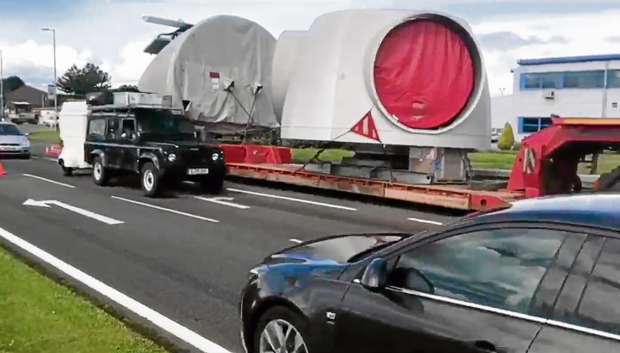Traffic was brought to a standstill in Nairn yesterday after two specialist lorries carrying massive wind turbine parts were forced to stop on a busy north road.
A video posted online by police showed the West of Scotland Heavy Haulage vehicles stationary in an eastbound lane of the A96 Inverness-Aberdeen road, in an area in the east of the town.
The incident, which happened in the early afternoon, caused traffic to build up several miles west of Nairn.
Police attended and a contraflow system was put in place using the opposite carriageway and adjacent turning lane, which eased the delays as repairs were carried out.
The cause of the breakdown was not clear last night.
Nairn Suburban and West Community Council chairman Richard Youngson said: “It happened out on the east side of Nairn, but traffic was backing up all the way through the town and it was just gridlock. They managed to get a route in place to get traffic moving.
“It just reinforces the need for a bypass, as with that bit of the A96 it is inevitable that you will get gridlock like that.
“In the summertime, when there is more light about, it might make more sense to carry these loads later at night.
“We are always amazed that a lot of these wide loads get through. It’s quite marvelous the way they steer through without clipping any signs or traffic lights.”
The video, posted on Twitter by Northern police, also sparked some online reaction.
One man, Andy Howard, wrote: “Is it not possible to transport these things at night as not to inconvenience the vast majority of the road using public?”
Another, Sybil Baldwin, wrote: “That makes a lot of sense Andy, given that the Highlands are a very popular tourist destination, and always very busy at this time of year.”
Design work for the Inverness to Nairn stretch of the A96 dualling programme, including the Nairn bypass, is already under way.
The public has been given a chanve to view the designs, with a preferred option expected to be announced next year.
The A96 dualling project is scheduled for completion by 2030, with a total of 86 miles due to be upgraded.
